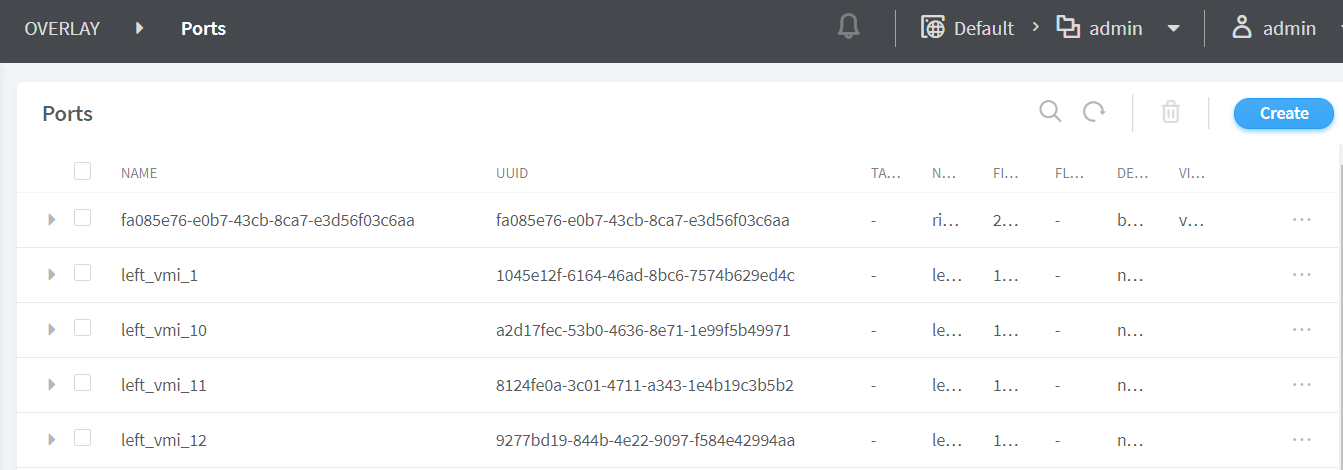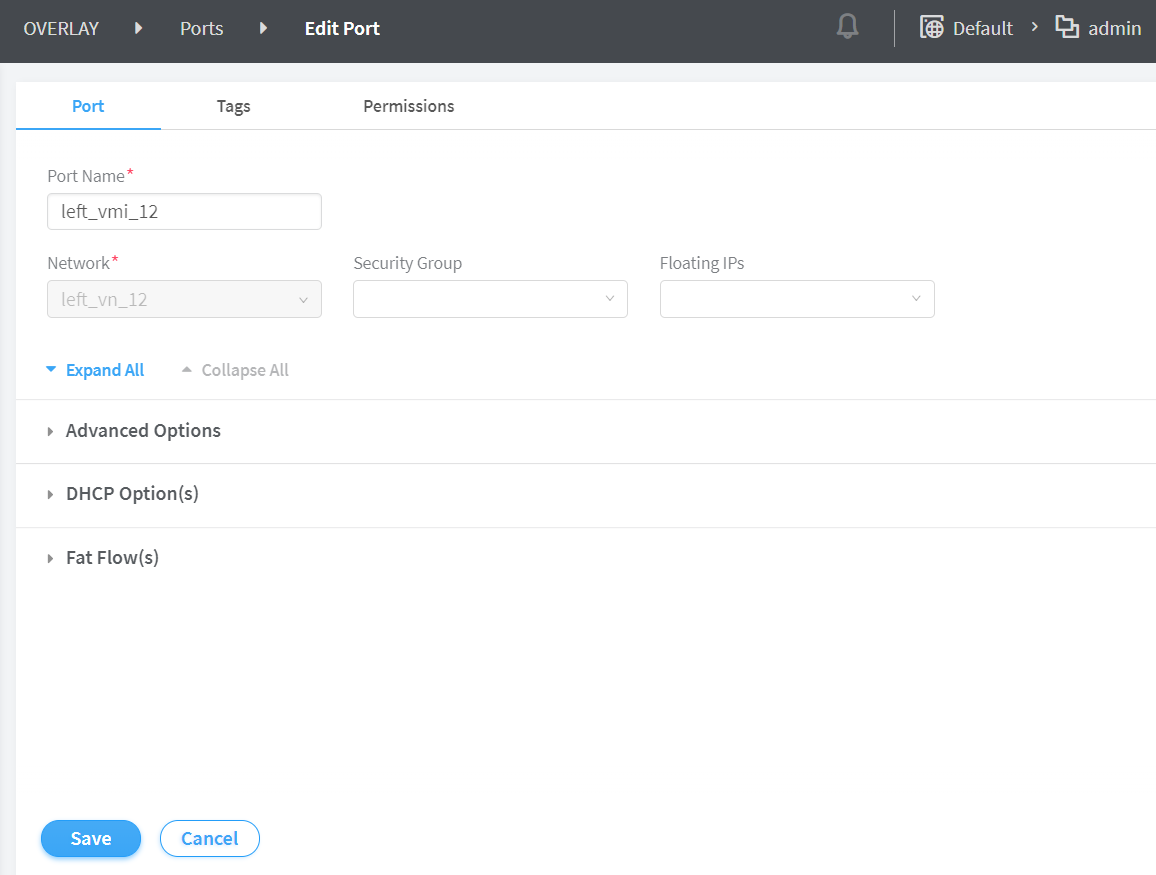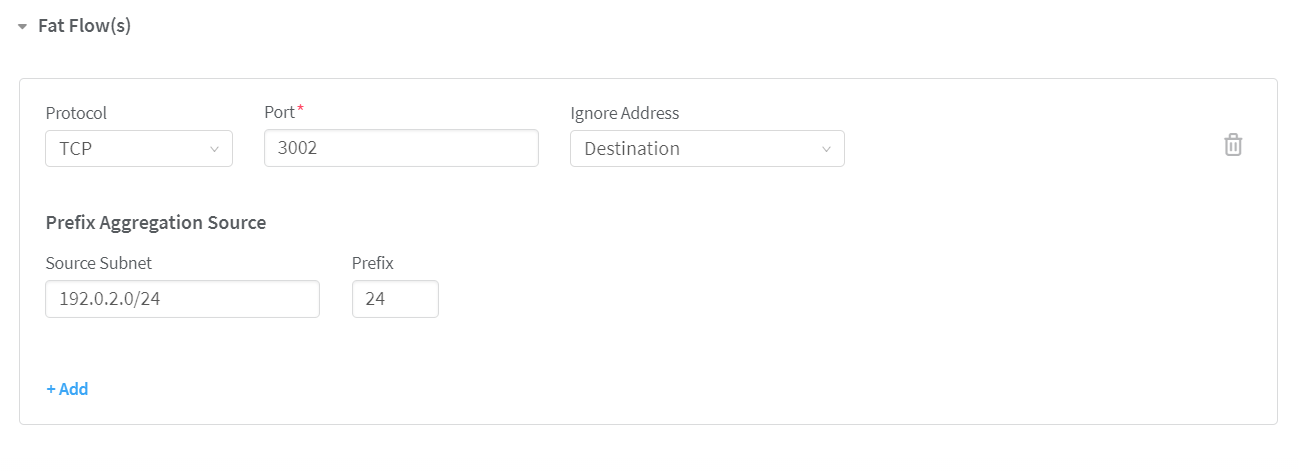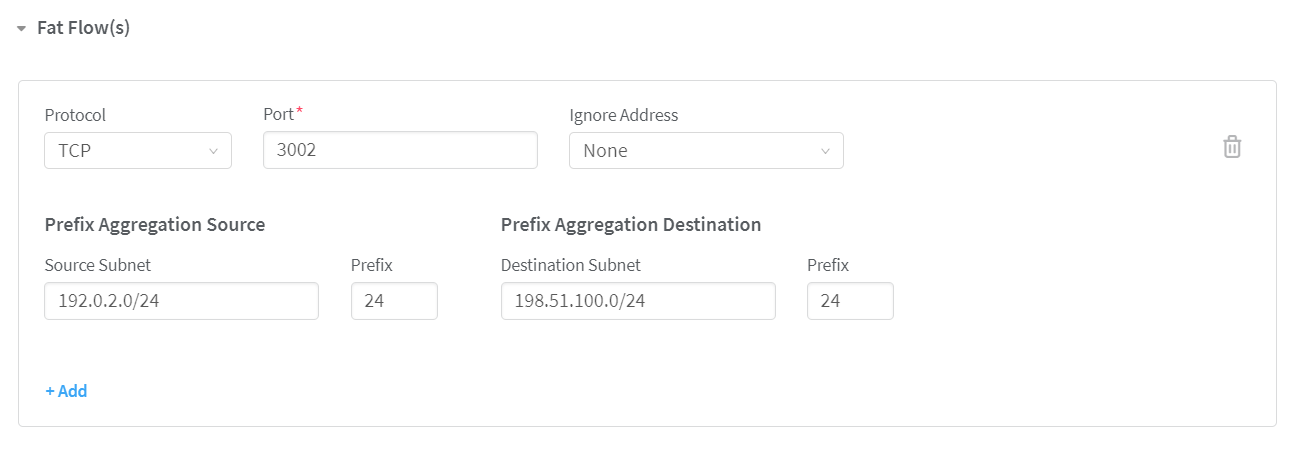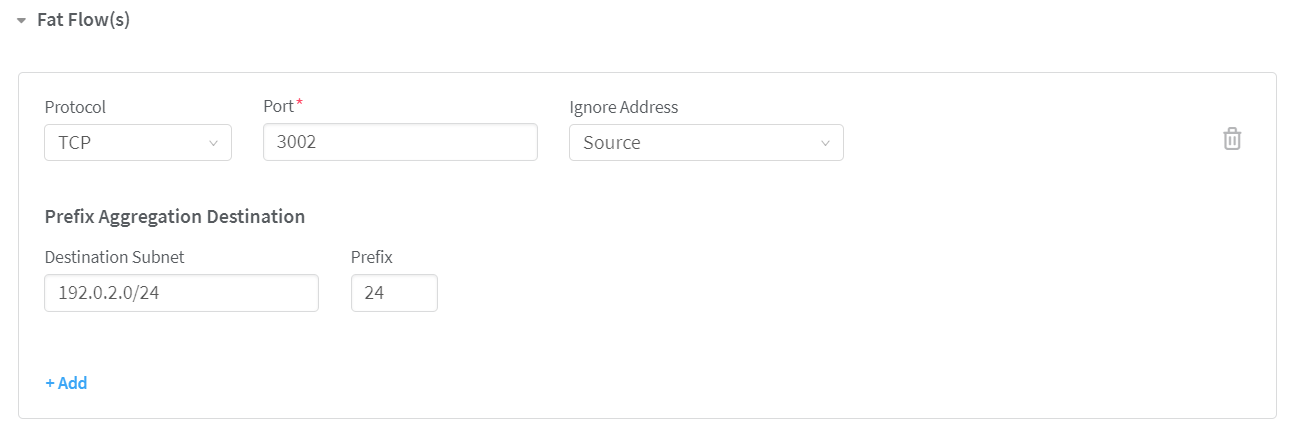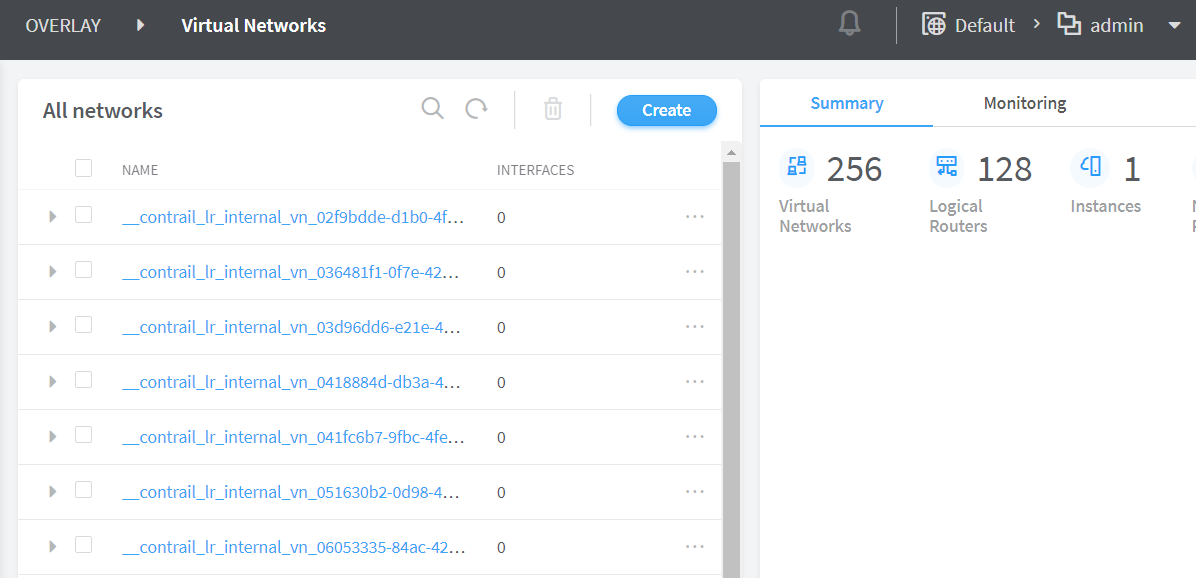Fat Flows
Service Providers provide services to several subscribers and as a result, large volume of flows are processed at the Contrail vRouter-level and Contrail Agent-level. Processing large volume of flows affects the flow setup rate and increases latency. Fat flow helps reduce the number of flows that are handled by Contrail.
Understanding Fat Flow
Contrail Networking optimizes the number of flows that are sent or received by a virtual machine by reusing a flow. A single flow pair or a fat flow comprises of a single forward and single reverse flow entry. A fat flow is used for a number of sessions between two end points that use the same application protocol.
For example, multiple DNS sessions from a client to a server can be set up by using a single flow pair. The flow key is reduced from five tuples to four tuples consisting of source IP address, destination IP address, server port, and internet protocol. This can be configured by specifying the fat flow protocol on the virtual machine interface (VMI). The client port, however, is not used in the flow key. The fat flow key can be further reduced to two tuples.
You can configure fat flows by specifying the list of fat-flow protocols on a virtual machine interface (VMI). For each such application protocol, the list contains the protocol and port pairs. If you want to enable the fat flow feature on the client side, the configuration must be applied on the client VMI as well. Contrail Networking also supports configuring fat flow at the virtual network (VN) level. When configured at the VN level, the fat flow configuration is applied to all VMIs under the configured VN.
Contrail Networking also supports aggregation of multiple flows into a single flow by ignoring source and destination ports or IP addresses, with the following possible options:
ignore source and/or destination ports
ignore source and/or destination IP addresses
ignore a combination of source and/or destination ports and IP addresses
Prefix-Based Fat Flow
Contrail Networking enables you to configure the Ignore Address field that reduces the number of flows. You can also create fat flows by configuring prefix length. Service provider subscribers in a common IP address pool can access any IP address in the pool. With the introduction of prefix-based fat flow, Contrail Networking supports mask processing where you can create flows based on a group of subscribers. This ensures that continuous flows in the same subnet are grouped into a common fat flow that is configured with the same protocol and port numbers. You can apply prefix length-based fat flow on source IP address while the Ignore Address option is configured on the destination IP address, resulting in a reduction of flow processing.
For example, you use prefix-based fat flow to create one flow for 255 IP end points in a /24 subnet (aggregate) mask or one flow for 65,535 IP end points in a /16 subnet (aggregate) mask. This results in a huge reduction on the number of flows created, and a corresponding increase in the number of traffic flows going through vRouter without being limited by vRouter flow setup rate.
Configuring Fat Flow from Contrail Command
You use the Contrail Command user interface (UI) to configure fat flow.
You can configure fat flow from:
Overlay>Ports or
Overlay>Virtual Networks
Configuring Fat Flow from Overlay>Ports
To configure fat flow from Overlay>Ports:
Understanding Source and Destination
Source—For packets from the local virtual machine, source refers to the source IP of the packet. For packets from the physical interface, source refers to the destination IP of the packet.
Destination—For packets from the local virtual machine, destination refers to the destination IP of the packet. For packets from the physical interface, destination refers to the source IP of the packet.
Configuring Fat Flow from Overlay>Virtual Networks
You can also configure fat flow at the virtual network (VN) level of Contrail Networking. When you configure fat flow from the VN level, the fat flow configuration is applied to all VMIs under the configured VN.
To configure fat flow from Overlay>Virtual Networks:
Click Overlay>Virtual Networks.
The Virtual Networks page is displayed. See Figure 6.
Figure 6: Virtual Networks PageSelect the virtual network you want to edit by selecting the check box next to the name of the virtual network, and then click the Edit icon.
The Edit Virtual Network page is displayed. See Figure 7.
Figure 7: Edit Virtual Network PageClick Fat Flows to display the fields that you can edit.
You can edit the fields listed in Table 2.
Table 2: Edit Fat Flows Field
Action
Protocol
Change the protocol that is currently being used to any one of the following protocols given in the Protocol list:
ICMP
SCTP
TCP (default)
UDP
You can select ICMP for both IPv4 and IPv6 traffic.
Port
Edit the Port field to any value between 0 through 65,535.
Enter 0 to ignore both source and destination port numbers.
Note:If you select ICMP as the protocol, the PORT field is not enabled.
Ignore Address
Change the Ignore Address field to any one of the following options:
Destination—If you choose Destination as the option, Prefix Aggregation Source fields are only enabled. See Figure 3.
None (default)—If you choose None as the option, both Prefix Aggregation Source and Prefix Aggregation Destination fields are enabled. See Figure 4.
Source—If you choose Source as the option, Prefix Aggregation Destination fields are only enabled. See Figure 5.
Note:Fat flow in Contrail Networking supports aggregation of multiple flows into a single flow by ignoring source and destination ports or IP addresses.
Prefix Aggregation Source
Source Subnet
Edit source IP address.
Ensure that the source subnet of the flows match. For example, to create fat flows with 192.0.2.0/24 as the subnet, enter 192.0.2.0/24 in the Source Subnet field.
Valid range of the subnet mask: /8 through /32.
For more information, refer to the Understanding Source and Destination section.
Prefix
Edit source subnet prefix length.
The prefix length you enter is used to aggregate flows matching the source subnet. For example, when the source subnet is 10.1.0.0/16 and prefix length is 24, the flows matching the source subnet is aggregated to 10.1.x.0/24 flows.
Valid range of the prefix length: /(subnet mask of the source subnet) through /32.
For more information, refer to the Understanding Source and Destination section.
Note:Contrail Networking enables you to configure subnet and prefix length.
Prefix Aggregation Destination
Destination Subnet
Edit destination IP address.
Ensure that the destination subnet of the flows match. For example, to create fat flows with 192.0.2.0/24 as the subnet, enter 192.0.2.0/24 in the Destination Subnet field.
Valid range of the subnet mask: /8 through /32.
For more information, refer to the Understanding Source and Destination section.
Prefix
Edit destination subnet prefix length.
The prefix length you enter is used to aggregate flows matching the destination subnet. For example, when the destination subnet is 10.1.0.0/16 and prefix length is 24, the flows matching the destination subnet is aggregated to 10.1.x.0/24 flows.
Valid range of the prefix length: /(subnet mask of the destination subnet) through /32.
For more information, refer to the Understanding Source and Destination section.
Note:You can configure subnet and prefix length from with Contrail Networking Release 5.1.
(Optional) If you have not already added fat flow information, you can add information by clicking +Add. You can enter information as given in Table 2.
Click Save to add new configuration information.
A service virtual machine (SVM) is a virtualized network function (VNF) that is a part of a service chain. Fat flow configuration on SVM is supported when:
Left VMI: Ignore source address and/or Prefix aggregation destination
Right VMI: Ignore destination address and/or Prefix aggregation source
Fat flow on service virtual machine interfaces (SVMIs) in scale-out mode is supported when all SVMIs are on the same compute, and not on the source or destination compute.
Fat flow configuration across all SVMs must be consistent.
Limitations of Fat Flow
The following are the limitations of fat flow.
Drop in packet per second (pps) performance depends on the number of rules or configuration.
Network policy configuration must be consistent with fat flow configuration.

